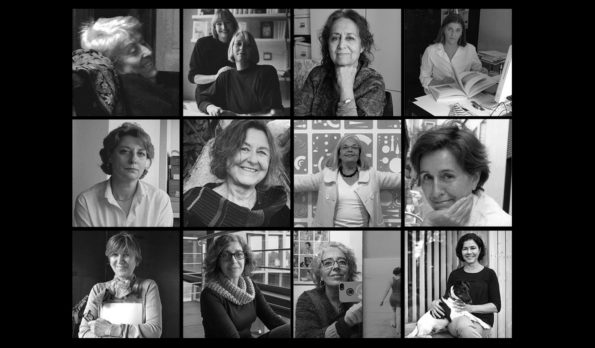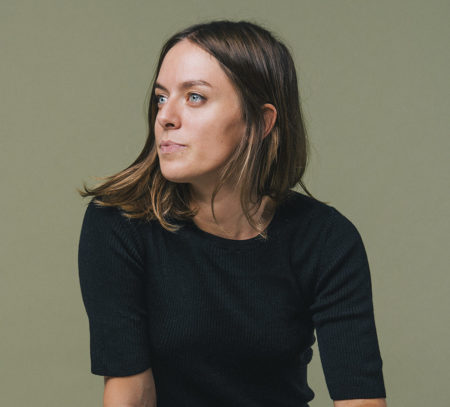Search
To search for an exact match, type the word or phrase you want in quotation marks.
A*DESK has been offering since 2002 contents about criticism and contemporary art. A*DESK has become consolidated thanks to all those who have believed in the project, all those who have followed us, debating, participating and collaborating. Many people have collaborated with A*DESK, and continue to do so. Their efforts, knowledge and belief in the project are what make it grow internationally. At A*DESK we have also generated work for over one hundred professionals in culture, from small collaborations with reviews and classes, to more prolonged and intense collaborations.
At A*DESK we believe in the need for free and universal access to culture and knowledge. We want to carry on being independent, remaining open to more ideas and opinions. If you believe in A*DESK, we need your backing to be able to continue. You can now participate in the project by supporting it. You can choose how much you want to contribute to the project.
You can decide how much you want to bring to the project.

I form a part of a collective that for the fact of being women has always had low self-esteem. From a very tender age we’ve been reified as commodities and valued not for our thoughts but for our bodies, a fact that is reflected in the world of labour. Why do most female designers think we’re incapable of arriving at certain places? Well, having been told so many times that perhaps we weren’t good enough, or capable enough, we’ve ended up believing it.
The twelve female graphic designers in the Dissenyadores gràfiques exhibition curated by Teresa Julio, M. Àngels Fortea and Teresa Martínez Figuerola are determined to challenge this idea. The show is a tribute to a pioneering generation of professional female graphic designers in Catalonia born between the forties and the late fifties, and who graduated from Elisava and Eina design schools in Barcelona in the late sixties and seventies.
The exhibition intends to shed light on the extremely relevant work produced by Toni Miserachs, Loni Geest-Tone Høverstad, Pilar Villuendas, Mercedes Azúa, Tere Moral, Carme Vives, Tere Martínez, Ana Zelich, Mont Marsà, Xeixa Rosa, Ana de Tord and Pati Núñez which, according to the curators, ‘has never received the same treatment as that of their male counterparts: the references to their contribution in books on the history of design are scant, as is the number of exhibitions in which they have featured, which explains why their sphere of influence is much smaller and dispersed than the one they truly deserve.’
Ingrid Picanyol: Who’s Who?
M. Àngels Fortea: I’ve been a teacher at BAU Design College of Barcelona since 2007-2008. I studied Advertising and then moved on to Graphic Design. I’ve worked in the graphic industry and I hold a Ph.D. in Design from the Fine Arts College at the University of Barcelona (UB), where I devoted my thesis to the history of graphic design.
Teresa Martínez Figuerola: I’m a graphic designer and a lecturer in History of Design at BAU Design College of Barcelona. I’m also a researcher and coordinator at the Group of Research in Design and Social Transformation (GREDITS, for its initials in Catalan) at BAU, where I also coordinated the Historical Memory and Cultural Construction of Art and Design programme.
Teresa Julio: I hold a Ph.D. in Spanish Philology and have been a lecturer at the Faculty of Translation, University of Vic, for twenty-five years. I also belong to the research group in Gender, Translation, Literature, History and Communication studies, where since July 2011 we’ve been organising a biannual exhibition that spotlights the work of twelve women in different walks of life in Catalonia.
Ingrid Picanyol: How and where did the project first arise and where will you be taking it?
M. Àngels Fortea: The idea for the exhibition arose spontaneously among a group of us. Teresa Martínez and I were working on a project for revisiting and calling attention to female graphic designers, inspired and influenced by our thesis supervisor Anna Calvera. We had met Teresa Julio and we also knew that the Gender Studies research group at the University of Vic (UVIC) was carrying out similar work. In addition, BAU is a centre affiliated with UVIC, so we suggested developing the project together.
Teresa Julio: The exhibition was hosted for the first time in July at the Vic Social Club and then, in September, it toured to Vernis, a UVIC venue. At present we’re hoping to stage it again at the school of the Catalan Guild of Graphic Industries, one of the sponsors of the exhibition, at the Llotja Art School in Barcelona and at various civic centres in the Catalan capital.
Ingrid Picanyol: Now that you mention Anna Calvera i Salgué, I’d like to call attention to the wonderful intellectual biography written by Isabel Campi that opens the exhibition catalogue. Excerpts like, ‘I don’t intend to list or number the articles and books she wrote, the conferences she attended, the subjects she taught or the important role she played in different design associations because I think that would be too predictable’ reveal the profound admiration the author feels for her, and which I imagine you also feel. What prompted you to dedicate the exhibition to her?
M. Àngels Fortea: Anna Calvera had been working for some time on a project to bring visibility to female graphic designers. Unfortunately, she passed away in February 2018, and Teresa Martínez and I felt that we had to do it for her, and that we had to do it now. So we decided to take advantage of the exhibition to pay tribute to her.
Ingrid Picanyol: How important do you think the task of emphasising the role of women in a professional field mostly led by men actually is?
M. Àngels Fortea: At BAU we have a woman director and quite a few women hold important jobs, like the head teacher. GREDITS has opened up a line of research in gender studies, and among other activities we organised an exhibition of female graphic designers, both well known and emerging, on occasion of last year’s International Women’s Day (8 March). We’re currently doing a lot of work in this area and are trying to increase the presence of women in our teaching programmes. I personally update the curriculum continuously, introducing new female designers no sooner I discover them. Years ago this was much more difficult to do, but with our current access to information nowadays it’s quite easy.
Teresa Julio: Yes, it’s true that important positions are still mostly occupied by men. At UVIC, for instance, they still occupy over 80%. In my opinion, bringing visibility to women is a very powerful tool for transformation. In fact, one of the anecdotes I remember about the day the exhibition opened at the Vic Social Club, for instance, was when a UVIC lecturer showed surprise upon discovering that Toni Miserachs was a woman. He was familiar with her work through the numerous book covers she had designed, but he thought the designer was a man. We still have a long way to go.
Ingrid Picanyol: Do you feel that in order to comply with a selection that would match this twelve-name structure, you’ve had to leave other names out? Is there anyone you would like to mention in this article?
M. Àngels Fortea: I’m convinced that before1959 there were other female designers we haven’t even had the opportunity to get to know. Unfortunately, the documentation is so scant that it’s been impossible for us to carry out exhaustive research. Moreover, we’ve been unable to contact some female designers because they’ve passed away, and apparently documentation centres like Barcelona’s Museu del Disseny have very little information about them. This is the case of professional designers like Montserrat Coma, Mariona Aguirre and Pepa Estrada, for instance, whose work we would have liked to explore in greater depth.
The present reality of female designers has more similarities than differences with regard to the scene of the sixties. The majority of today’s design students are women, yet only a minority of studies are actually led by women and the few women who do manage to lead such projects will no doubt be questioned for what they do, for what they say, for how they dress and/or for how they show themselves.
We’ve all made such judgements, for this is one of the main strategies of the male chauvinism under which we’ve been educated in order to continue to exist. We urgently need to revise this by revising our own attitudes —this isn’t a struggle of women against men but a collective struggle against a system that has to change.
And the world of design can play an important role in this change. Although we’re now becoming aware of the transformative capacities of our projects, we still forget how bad things are at home: the curricula are still filled with male referents, and male designers still have louder voices than female designers at festivals and lectures.
We all want to be present: those who give the orders, those who are about to do so, those who don’t want to do so and those who are mediocre. Once we have equal conditions, we’ll be able to discuss who is worthy and who isn’t. We shouldn’t only talk about meritocracy when our presence is negligible. Parity should be obligatory; the excuse that there are no female designers is good for nothing — there are many of us, all different, and each one of us from our own position is ready to lead the change.

Ingrid Picanyol (1988) is an award-winning art director and graphic designer based in Barcelona. She is passionate about working with forward-thinking brands that understand the power and influence they have in society and take care of the way they communicate visually with their audience. Although the formalization of her projects is diverse, in general she acts encouraging concept and commercial strategy from an inclusive, feminist and environmentally responsible perspective. Before founding her own studio, she worked at Suki Design Studio (BCN), RoAndCo (NYC), Javas Lehn Studio (NYC) and ByFutura (CDMX).
"A desk is a dangerous place from which to watch the world" (John Le Carré)